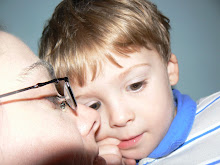Monday, September 11, 2006

Birds exploited for their eggs, called “laying hens” by the industry, are crammed together in wire cages where they don’t even have enough room to spread a single wing. The cages are stacked on top of each other, and the excrement from chickens in the higher cages constantly falls on those below. Their sensitive beaks are cut off so that they don’t peck each other out of the frustration created by the unnatural confinement, and farmers often deprive birds of food for as long as 14 days in order to shock their bodies into producing more eggs (the practice is called forced-molting). After their bodies are exhausted and their production drops, they are shipped to slaughter, generally to be turned into chicken soup or cat or dog food because their flesh is too bruised and battered to be used for much else.
Chickens are inquisitive, interesting animals who are as intelligent as mammals like cats, dogs, and even primates.1 They are very social and like to spend their days together, scratching for food, cleaning themselves in dust baths, roosting in trees, and lying in the sun. Dr. Chris Evans, administrator of the animal behavior lab at Australia’s Macquarie University, says, “As a trick at conferences, I sometimes list [chickens’] attributes, without mentioning chickens, and people think I’m talking about monkeys.”
Chickens are precocious birds. Mother hens actually cluck to their unborn chicks, who chirp back to their mothers and to one another from within their shells! The intelligence and adaptability of chickens actually make them particularly vulnerable to factory farming because, unlike most birds, baby chickens can survive without their mothers and without the comfort of a nest—they come out of the shell raring to explore and ready to experience life.
Subscribe to:
Post Comments (Atom)

















0 comments:
Post a Comment